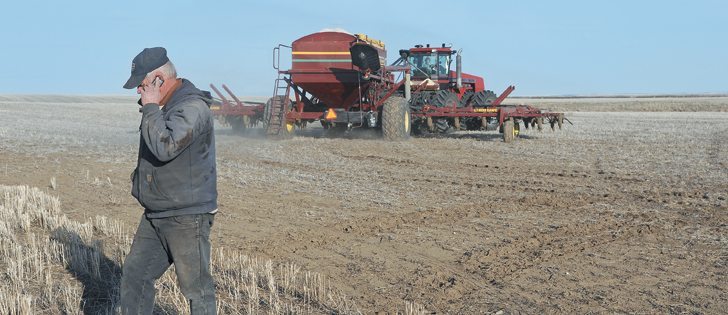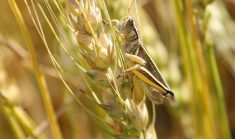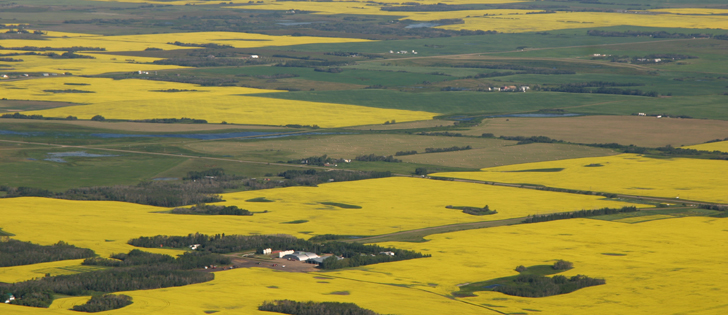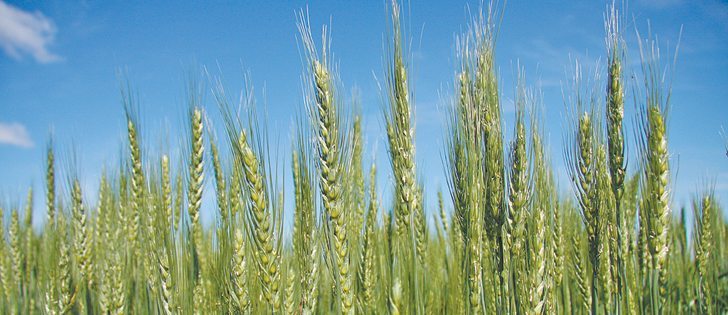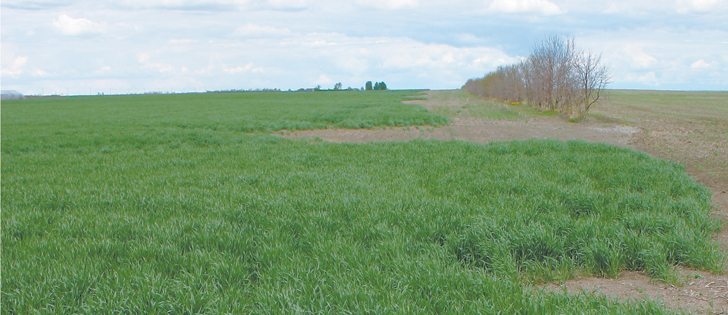Rain delays seeding | Southwestern Manitoba’s soggy fields remind farmers of 2011 conditions
For Rob Pettinger, 2014 is starting to resemble the forgettable spring of 2011.
Pettinger, who farms near Elgin, Man., said 75 millimetres of rain have fallen on his land over the last couple of weeks.
In a best case scenario, he won’t begin seeding until the last week of May.
“We haven’t done anything. We probably need 10 days to two weeks before we can get going,” said Pettinger, who has 2,200 acres of cropland.
He said most producers in southwestern Manitoba are also dealing with soggy land and few have begun seeding.
Read Also

Farming Smarter receives financial boost from Alberta government for potato research
Farming Smarter near Lethbridge got a boost to its research equipment, thanks to the Alberta government’s increase in funding for research associations.
Farmers in the area are starting to compare this spring to 2011, when overland flooding prevented producers from seeding three million acres. Most of the acres in southwestern Manitoba were lost.
“It’s getting pretty concerning,” Pettinger said.
“I would bet, right now, there will be some acres (in the region) not seeded. It’s a matter of week to week, how big that number grows to.”
Elmer Kaskiw, Manitoba Agriculture’s farm production adviser in Minnedosa, said cropland isn’t quite as wet in his area. Still, growers across much of western Manitoba have seeded little to no crop.
“There are isolated pockets where there’s been one or two fields done on some better drained soils,” Kaskiw said.
Twenty mm of rain fell around Minnedosa over the weekend, he added.
Pettinger didn’t realize how wet his land was until May 10, when he towed harrows onto one of his fields.
“We pulled a set of harrows out just to open them up in the field,” he said.
“It was pulled out on a hilltop and the wheels on the harrow bar (sunk) right to the frame. It’s just soft, soggy wet.”
Reports from eastern Saskatchewan are similar to the wet soil conditions in western Manitoba. The first Saskatchewan Agriculture crop report for 2014, issued May 8, said “large amounts of water are lying in many fields” in east-central Saskatchewan.
“Due to the excess moisture in some areas of the region, seeding intentions may change if those fields do not dry up soon,” Saskatchewan Agriculture said.
More than 100 mm of precipitation have fallen on many regions of Saskatchewan since April 1. The rainfall, combined with cooler than normal temperatures, means seeding is a week away in eastern and northwestern Saskatchewan.
Shane Halstead, who farms near Nokomis, Sask., said he hopes to begin seeding this week.
“It’s a bit of a hit and miss for moisture,” he said.
“There’s lots of potholes with water and some of the flatter land is quite wet.… The odd guy has been starting to fire up (seeding), but there’s nothing major going on yet.”
Gord Peters of Cadillac, Sask., is one producer who is making decent progress this spring.
As of May 12, Peters had seeded one-third of his acres. He had already planted durum and lentils and was beginning to plant peas.
Peters said soil conditions are cooler than ideal, but moisture is satisfactory. He said his neighbours are also busy and there is plenty of activity on the land.
Jeff Nielsen of Olds, Alta., started seeding last weekend but was stopped by a snowstorm Saturday.
He planned to seed barley this week, even though it rained nearly every day in May and his land remains wet.
“Generally, people started Thursday and Friday last week in my area…. The bigger operators were out,” he said.
“People are hunting from one side of the farm to the other to try and find the driest land to work on first…. It’s going to be one of those years. We’re going to have to avoid areas (in fields). There’s still snow in the tree lines in places and on the north side of any buildings.”
In its initial crop report for 2014, Alberta Agriculture said cold temperatures and cool soil are a common theme this spring.
“Seeding delays are most evident in southern and east-central Alberta with seeding seven to 10 days behind as only six percent of crops have been seeded compared to the five year average of 17 percent and the long-term average of 32 percent.”
Kaskiw said many growers around Minnedosa are hesitant to begin planting because water is sitting in low-lying areas. It hasn’t drained because the soil below is still frozen.
“They (producers) know once the frost comes out of the ground, that water is going to drop and they’ll be able to seed through a lot of these areas.”
Kaskiw said it’s definitely been a cold, wet and sluggish start to the growing season, but there’s still time to turn things around.
“The reality these days is most producers are equipped to get the crop seeded in a short period of time…. I don’t think there is any panic, yet, by producers.”




